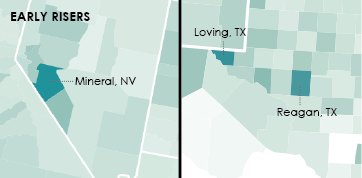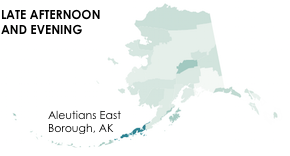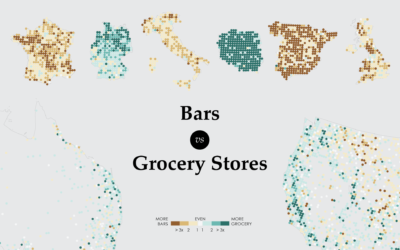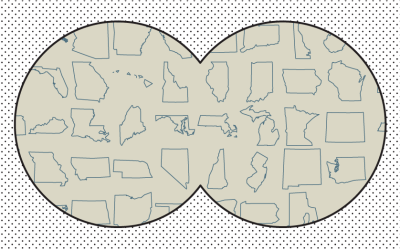Interactive: When Do Americans Leave For Work?
In a continued dig into commute data from the American Community Survey (We already saw mode of transportation.), the map above shows when people leave home for work. The rates are for people who have jobs and are 16 years or older. The data does not include people who work from home.
Do we get anything interesting even though it’s just one facet of the commute to work? Yeah. At the very least, it’s fun to watch the map play out.
As you’d expect, many commuters leave home between 7:00am and 8:00am. However, rates concentrate around this hour much more in some counties than others. This is especially true for counties in the midwest. Around half of commuters in many midwest counties leave during this hour.
This surprised me. Maybe it’s my own misconception, but I always thought of people rising early in the farming areas. Maybe they wake up early to tend to their own land, and then head out at regular times for work? Maybe because there are fewer job types? I’m not sure. Midwesterners, please enlighten me.
In contrast, commuters are more spread out between 7:00am and 8:30am in other areas. Or, if you’re in a heavily populated, long-commute county (like in southern California), start the clock closer to 6:00am.
Still, fairly normal. The outliers are the most interesting bits.
 Look at commuting rates during the late night and early morning hours. Nevada stands out, especially Humboldt county where more than a quarter leave for work when it’s still dark. Although, again, this confuses me. Why do people go to work at this time? I suspect it has something to do with a long commute time.
Look at commuting rates during the late night and early morning hours. Nevada stands out, especially Humboldt county where more than a quarter leave for work when it’s still dark. Although, again, this confuses me. Why do people go to work at this time? I suspect it has something to do with a long commute time.
LaGrange county in Indiana, known for its large Amish population, also has many leave for work during the midnight to 4:59am time slot.
 There are early-risers everywhere but only a handful of counties where most leave between 6:00am and 6:29am.
There are early-risers everywhere but only a handful of counties where most leave between 6:00am and 6:29am.
 Finally, once you get into the late afternoon and evening hours, there’s a low rate of commuters just about everywhere. Except for the Aleutians East Borough in Alaska, that is. With about 2,500 commuters, it’s mostly a commercial fishing area, and the hours are pretty much the opposite of the rest of the United States.
Finally, once you get into the late afternoon and evening hours, there’s a low rate of commuters just about everywhere. Except for the Aleutians East Borough in Alaska, that is. With about 2,500 commuters, it’s mostly a commercial fishing area, and the hours are pretty much the opposite of the rest of the United States.
Become a member. Support an independent site. Get extra visualization goodness.
See What You Get





